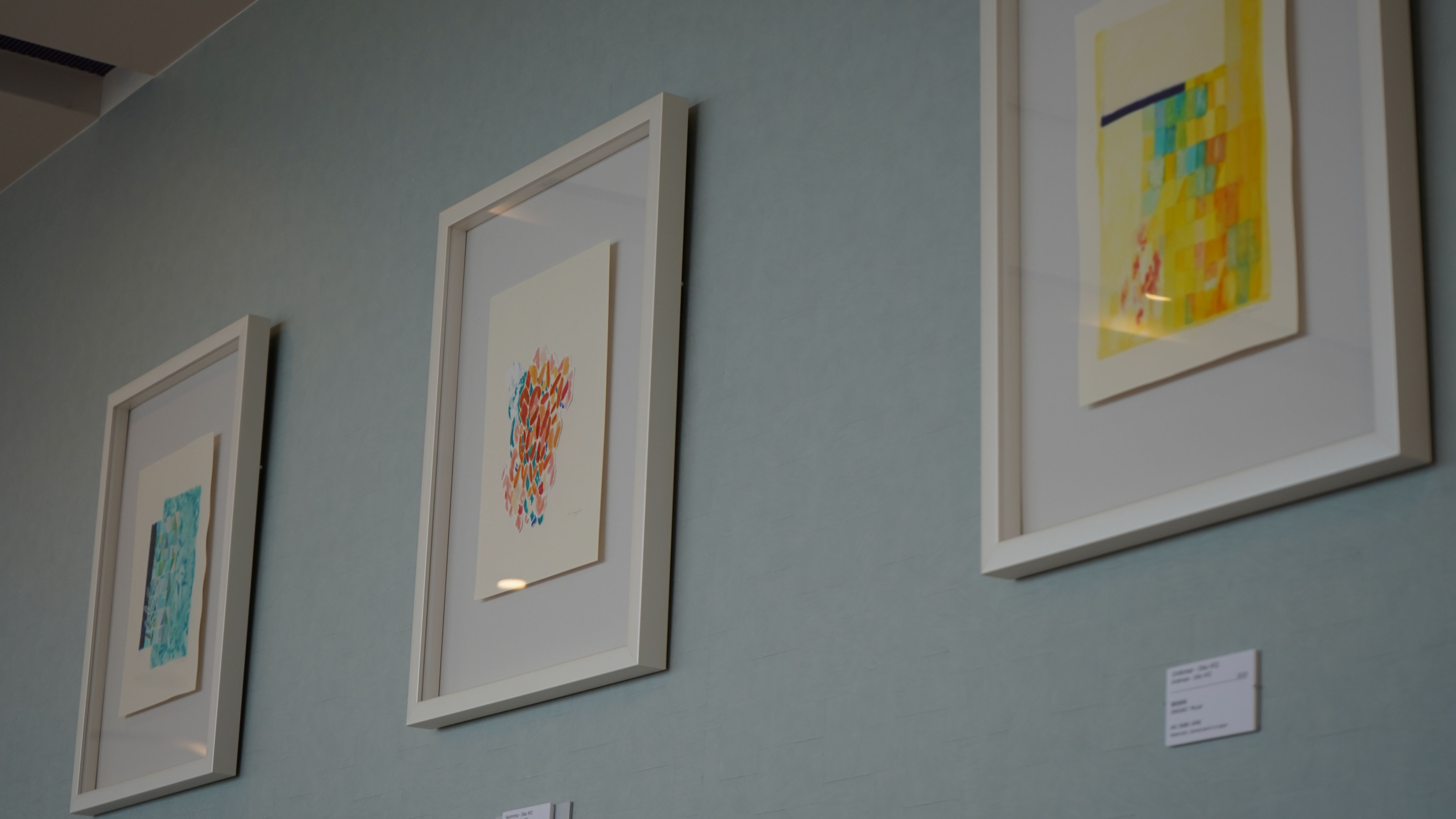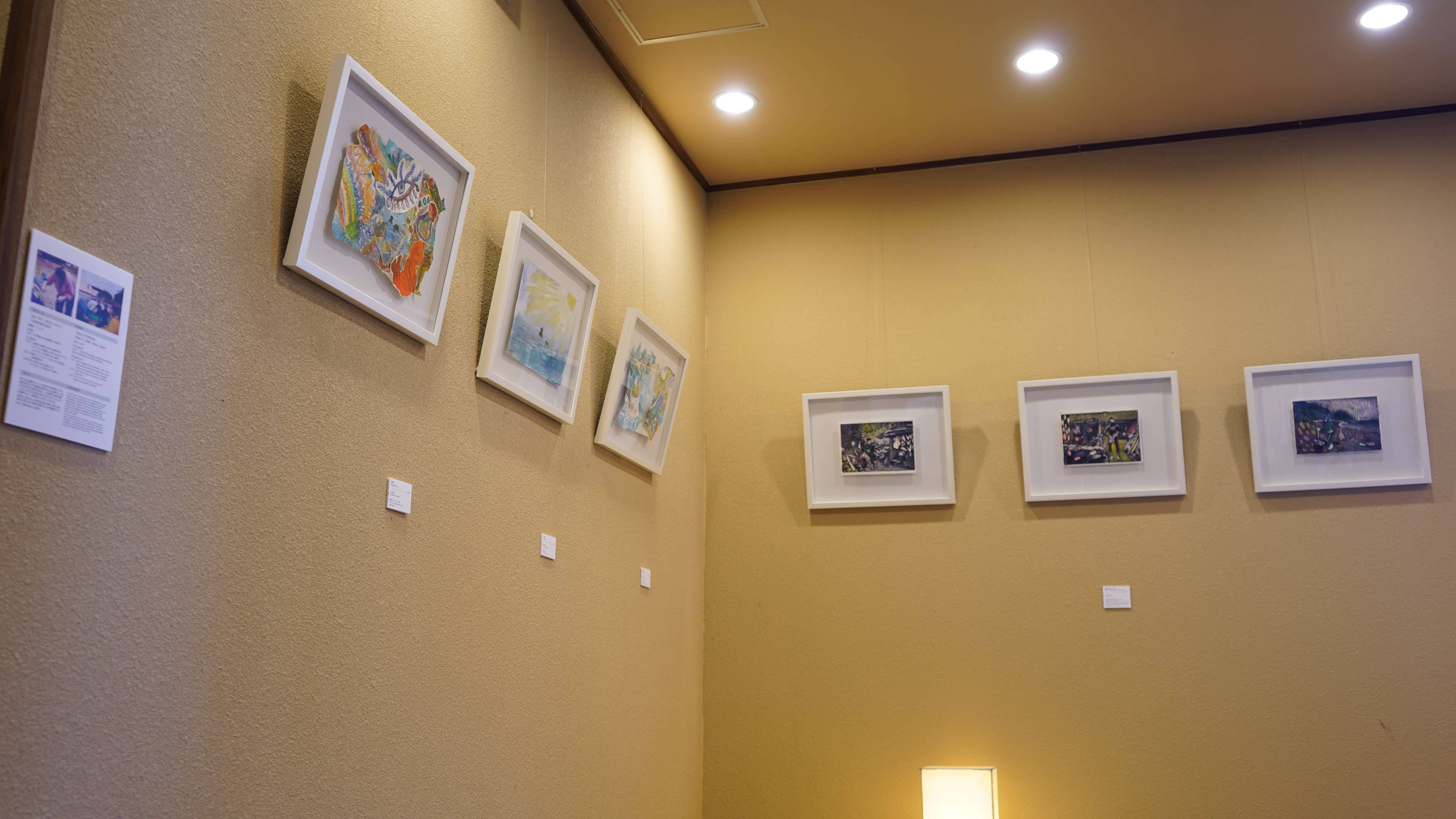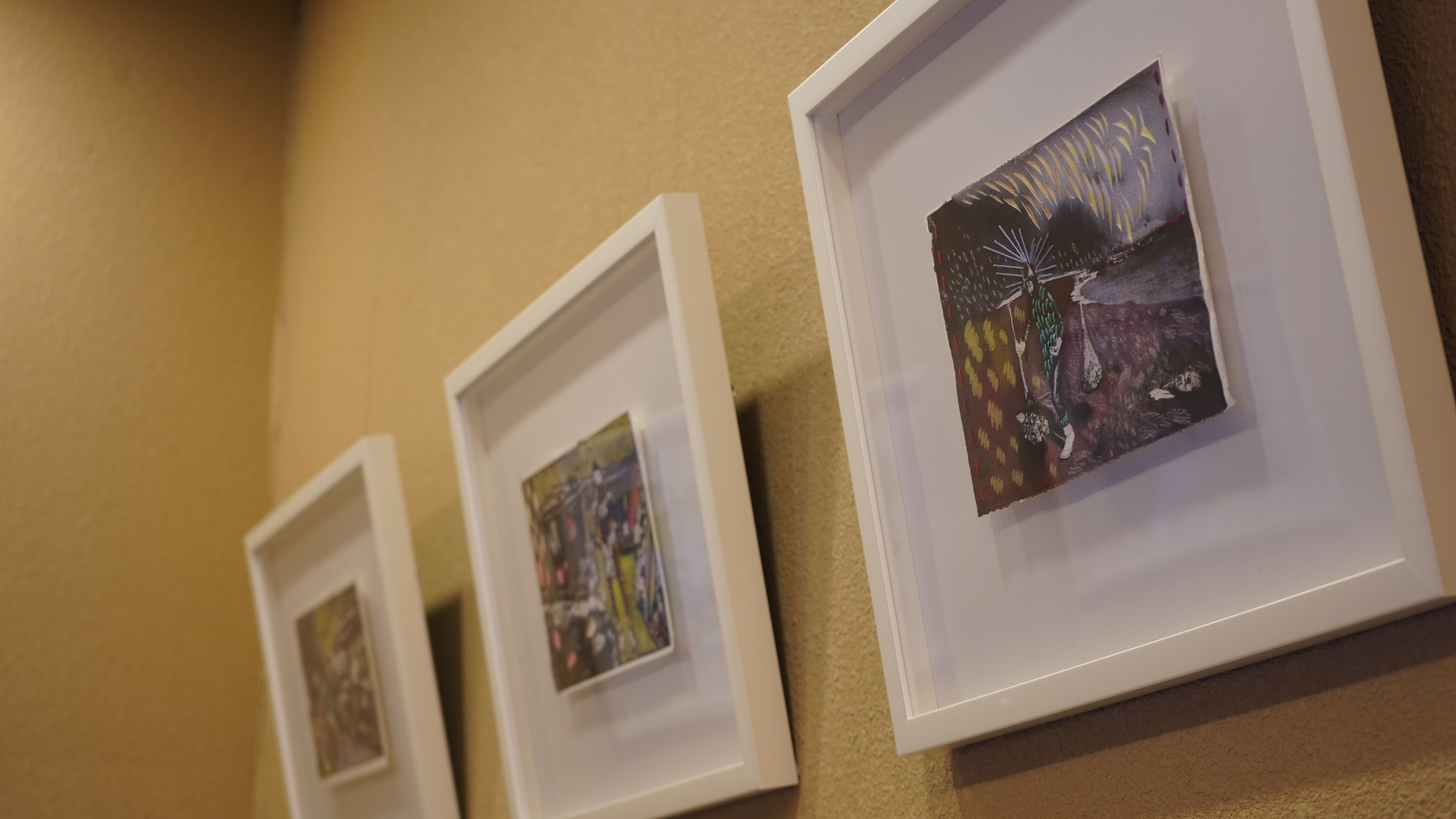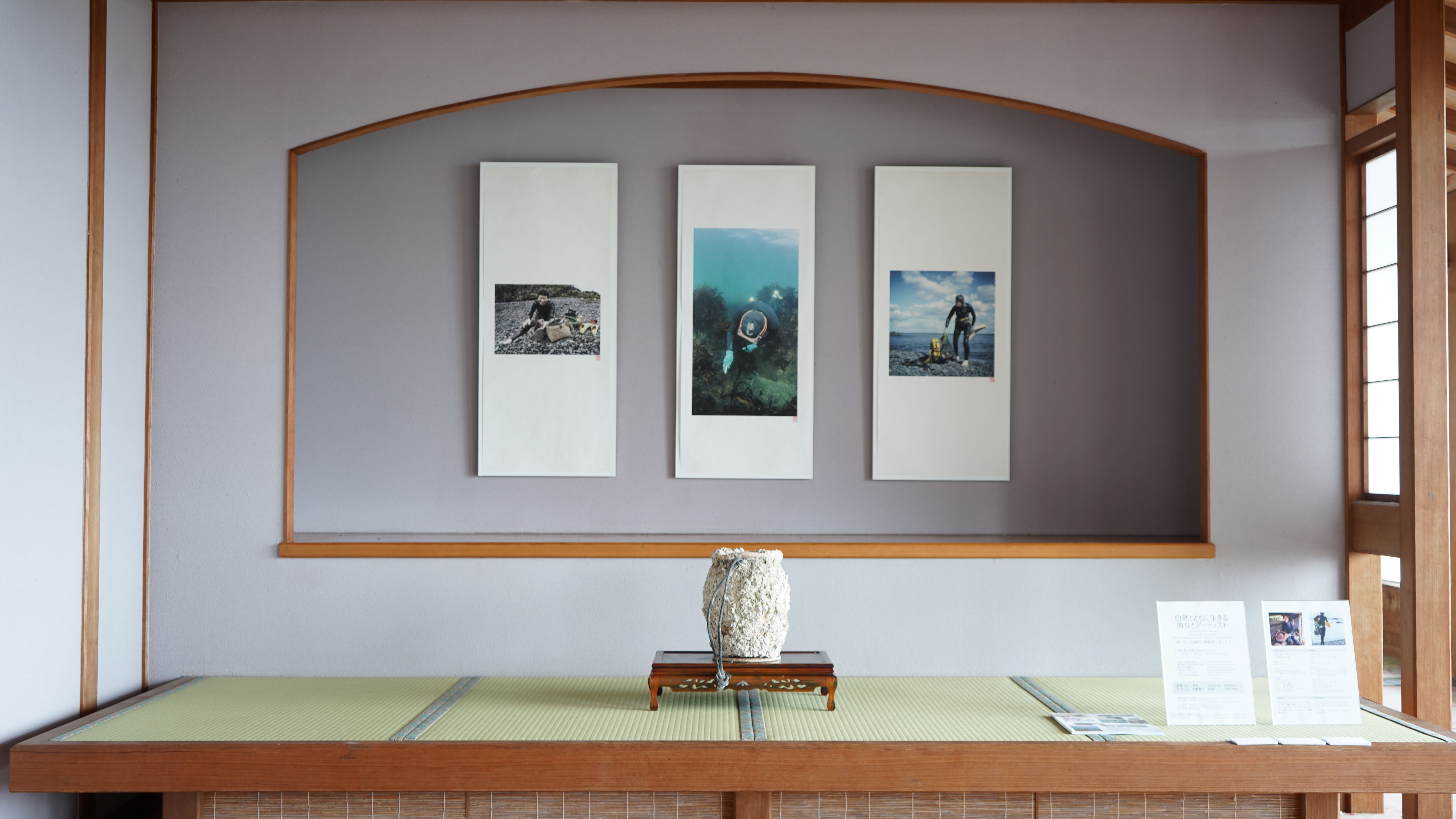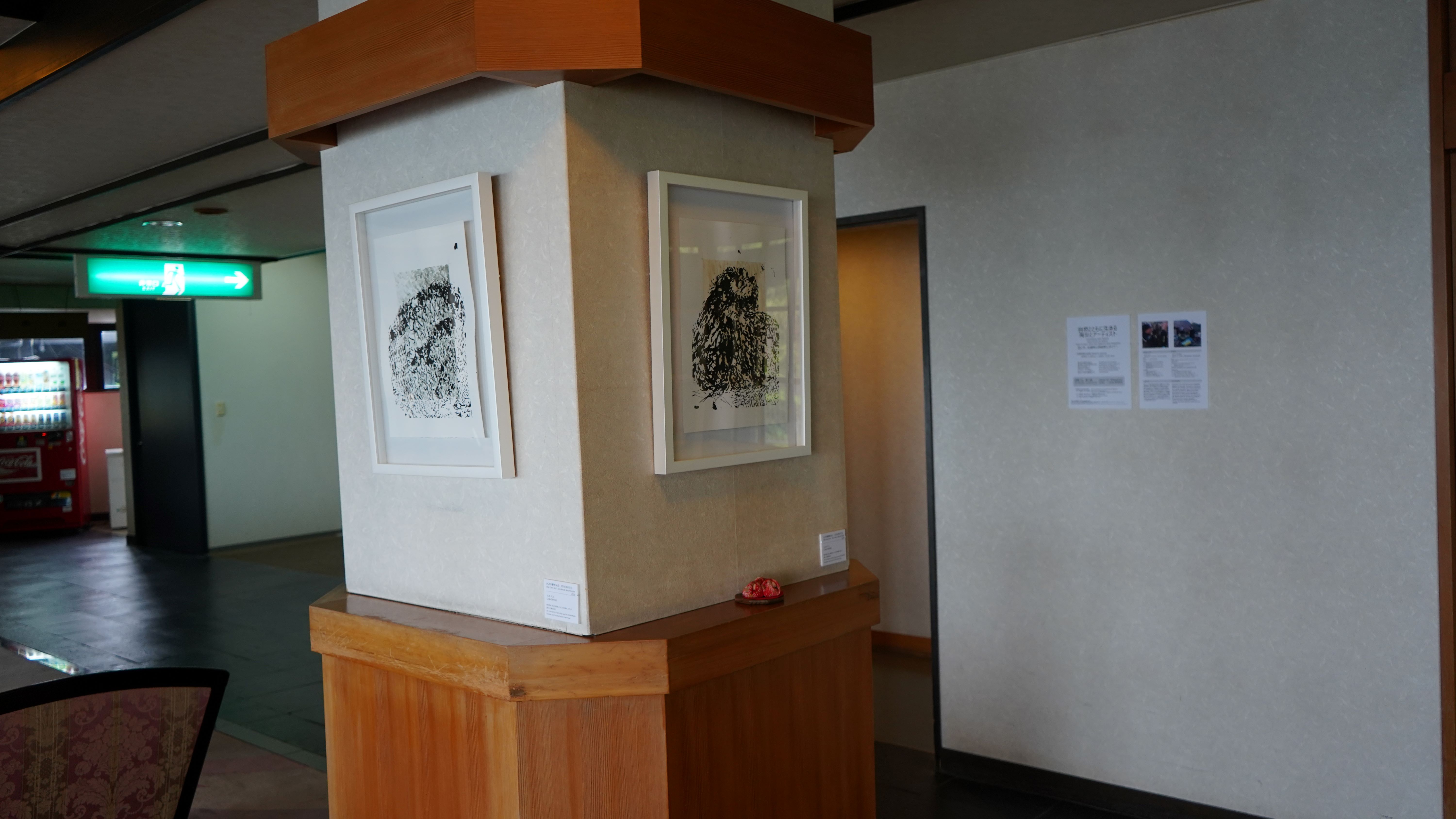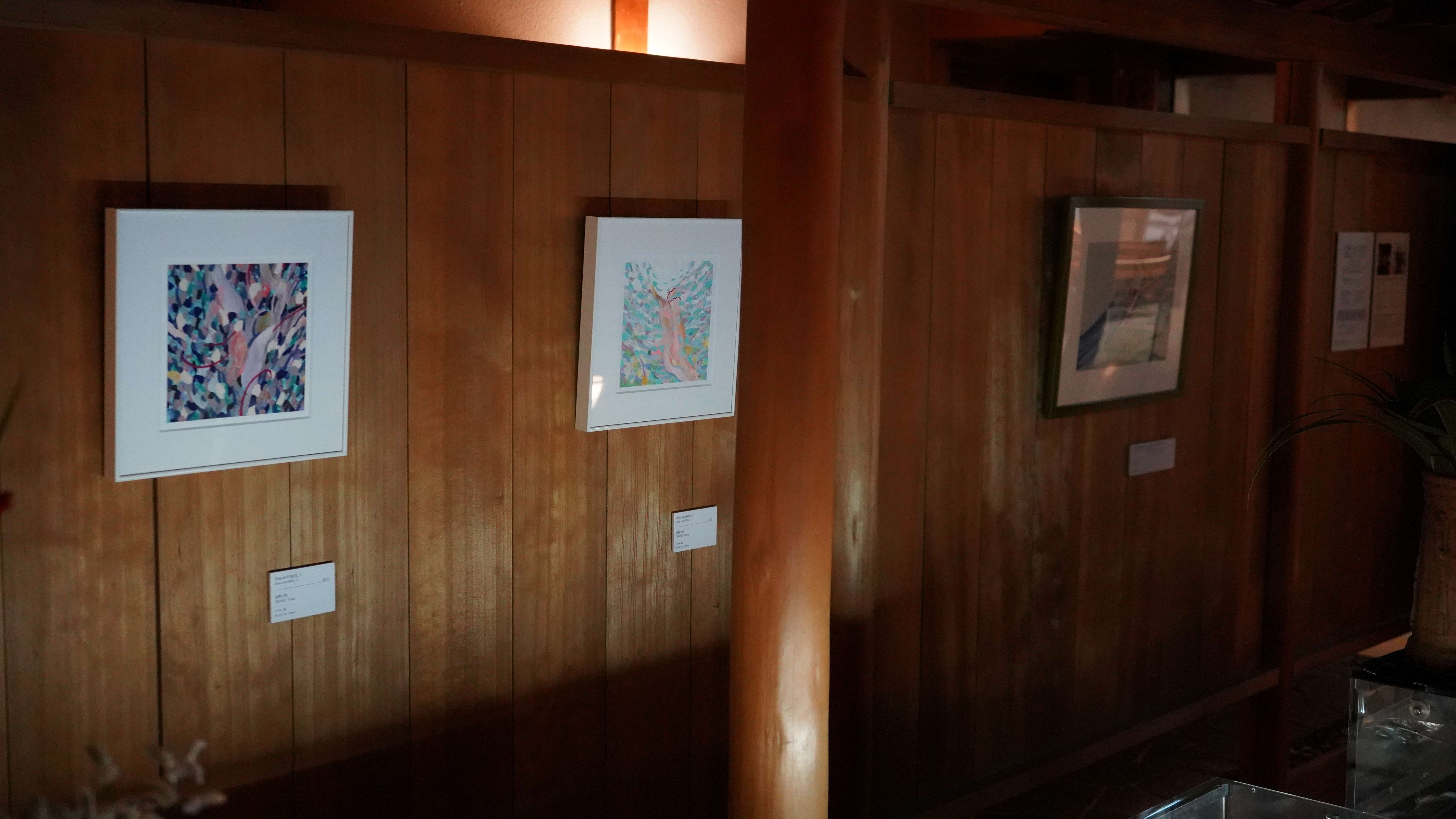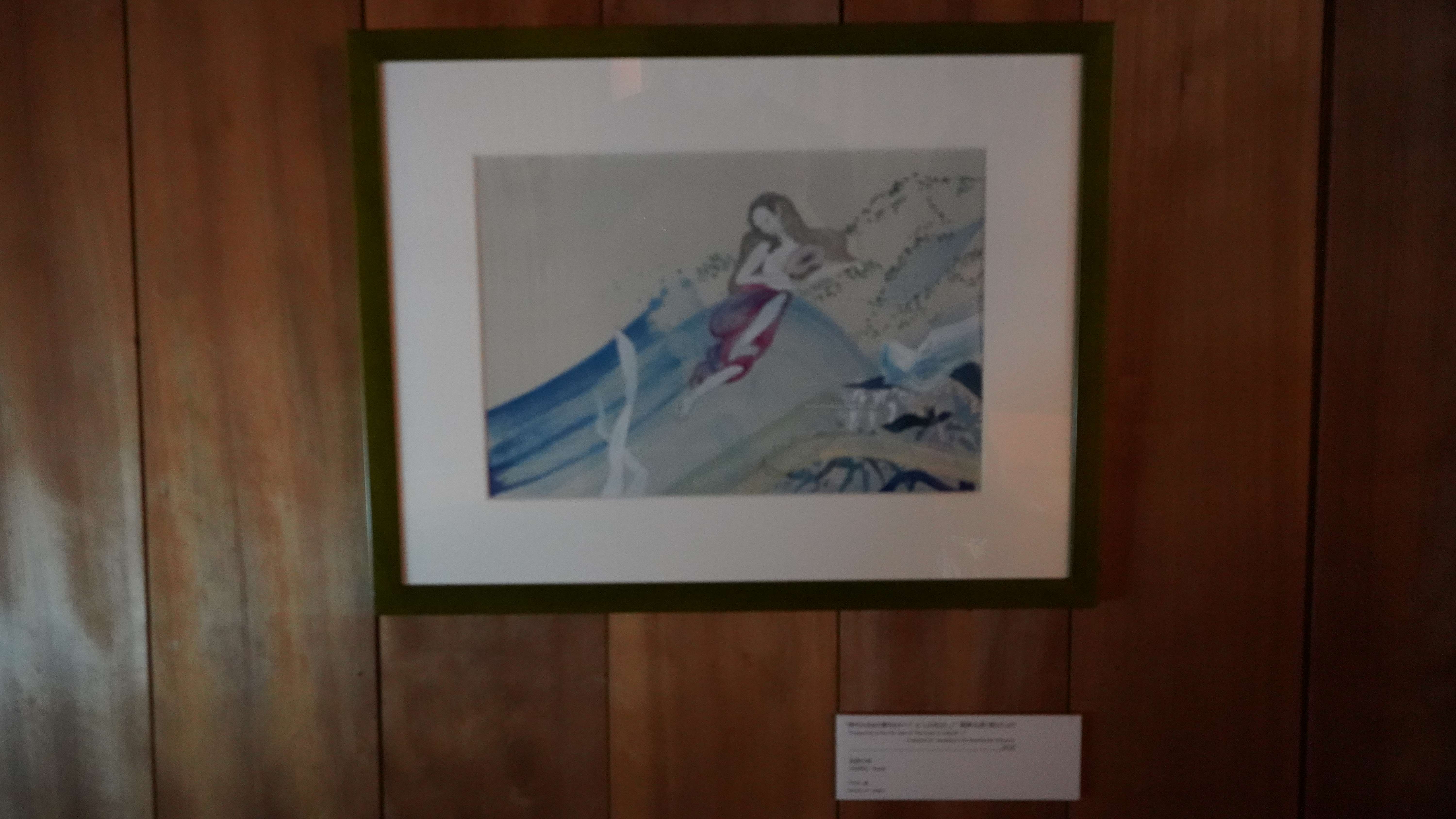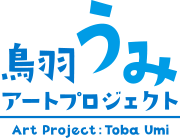約3000年という長い歴史を持つ「海女」。
海女はなぜ、これほど長く漁を続けることができたのでしょうか?
今の時代、私たちが新しい生き方を探求するとき、
自然の中で共同体を大切にし、持続可能な生活を送る海女たちから
影響を受けた作品は、私たちに新しい気付きを与えてくれるかもしれません。
縄文遺跡から出土したアワビ殻やアワビオコシ、奈良時代の「万葉集」、
平安時代の「枕草子」などから、その足跡をたどることができます。
時は流れ江戸時代、日本が誇る芸術として誕生した「浮世絵」にも
海女が描かれました。江戸時代の浮世絵師たちは、類稀なる潜水技術を
持つ海女に魅力を感じ、創造を膨らませ作品を制作しました。
東京神保町の古書店には、海女が描かれた浮世絵が今もねむっています。
現代のアーティストたちは、鳥羽市石鏡町で、自然と寄り添いながら
漁を続ける海女たちに出会い、何を感じるでしょうか?
With a history of over 3,000 years, why have Ama divers been able to continue for such a long time? Are there new insights to be gained of ways to live with nature, by conveying the charms of Ama diver culture through artworks inspired by Ama related culture and art. Ama culture can be traced through history from tools and abalone shells discovered from the Jomon era (14,000–300 BCE), and mentions in poems of “Manyoshu” of the Nara period (710–784) and “The Pillow Book” of the Heian period (794 to 1185). Ama divers were also depicted in ukiyoe prints of the Edo period (1603–1868), and original prints of Ama can be discovered lying hidden in the rare bookstores of Tokyoʼs Jimbocho. In this project, what will the artistsʼ response be when they meet Ama divers in Ijikacho living in tune with the seasons, and when they see Edo period Ukiyoe prints in Jimbocho inspired by Ama divers of the past?
With a history of over 3,000 years, why have Ama divers been able to continue for such a long time? Are there new insights to be gained of ways to live with nature, by conveying the charms of Ama diver culture through artworks inspired by Ama related culture and art. Ama culture can be traced through history from tools and abalone shells discovered from the Jomon era (14,000–300 BCE), and mentions in poems of “Manyoshu” of the Nara period (710–784) and “The Pillow Book” of the Heian period (794 to 1185). Ama divers were also depicted in ukiyoe prints of the Edo period (1603–1868), and original prints of Ama can be discovered lying hidden in the rare bookstores of Tokyoʼs Jimbocho. In this project, what will the artistsʼ response be when they meet Ama divers in Ijikacho living in tune with the seasons, and when they see Edo period Ukiyoe prints in Jimbocho inspired by Ama divers of the past?
| 開催日 : | 2020年7月18日(土) ~2021年3月31日(水) |
| 場所 : | 石鏡町展示会場:石鏡旅館内、石鏡町内各所、鳥羽市立海の博物館 / 神保町展示会場:ギャラリーそうめい堂、大屋書房、山田書店、五拾画廊、原書房 |
| お問合せ : | 鳥羽市観光課 |
| TEL : | 0599-25-1157 |

